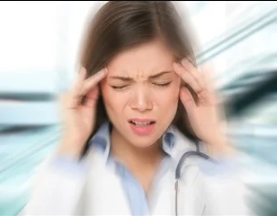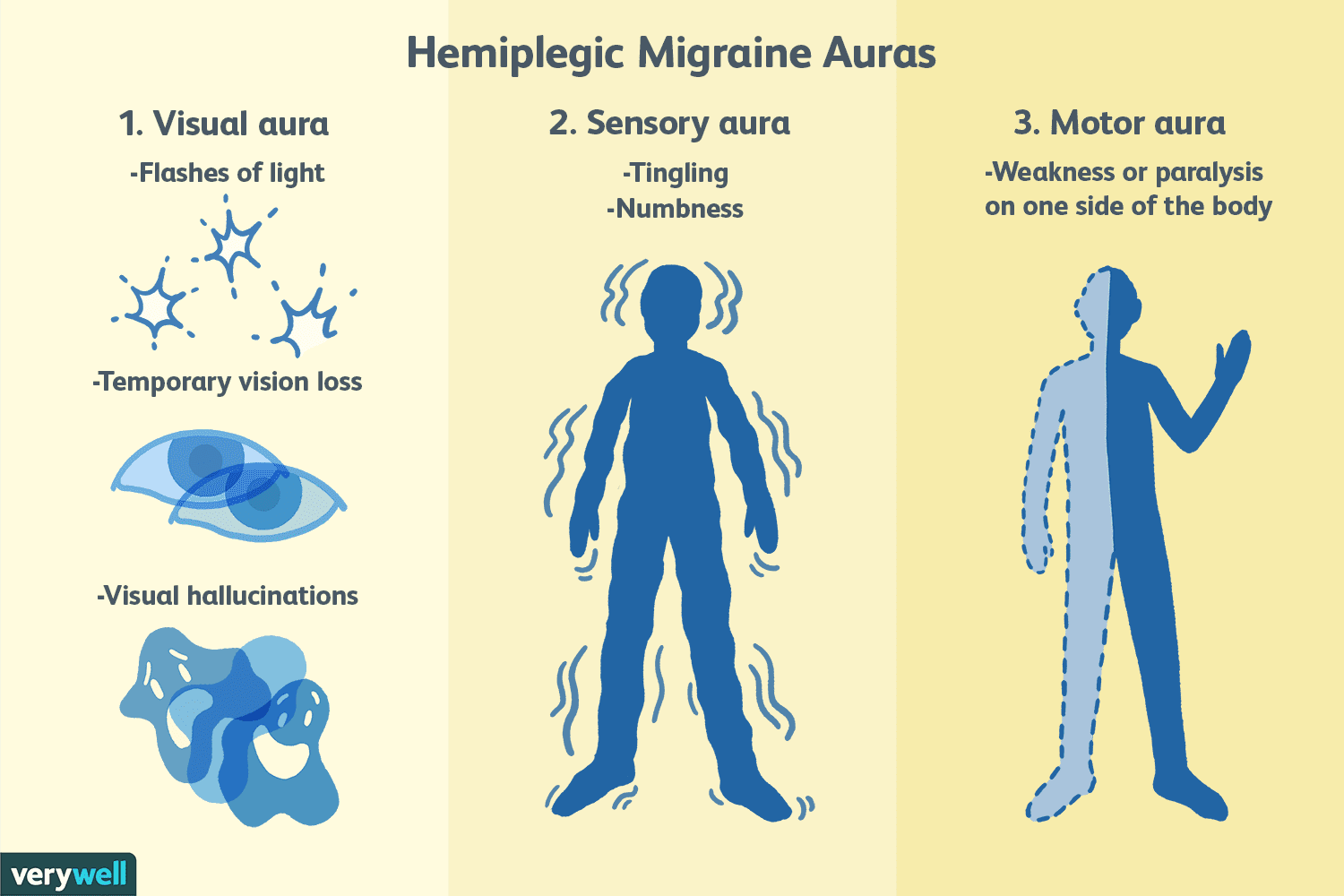Hemiplegic Migraines

A rare type of migraine called hemiplegic migraine can result in one sided weakness in addition to the headache itself and other related symptoms. While the usual type of migraine can result in a visual or sensory aura(neurological disturbance), the hemiplegic migraine also involves a motor aura.

These motor auras are exhibited by one sided weakness, or complete paralysis, which can last for minutes or days. Due to this weakness, combined with speech disturbances and drooping of the face, these migraines can be confused for a stroke or epilepsy, but the weakness is temporary.
RISK FACTORS
- occurs in 0.01% of a billion cases of migraine globally
- women are three times more likely than men to develop hemiplegic migraines, which raises the question as to whether there is a hormonal factor
- the average age of onset is 12 to 17 years old
COMMON TRIGGERS
- certain foods
- certain smells
- lights
- stress
- too little/too much sleep
- physical activity
- head trauma
TYPES OF HEMIPLEGIC MIGRAINES
- Familial hemiplegic migraine / hemiplegic-ophthalmoplegic migraine
- sporadic hemiplegic migraine / non-familial hemiplegic migraine
An aura, or neurological disturbance precedes the headache (most commonly visual changes and hemiparesis, or one sided numbness or weakness). There may also be speech issues, confusion and drowsiness
Familial hemiplegic migraine
- runs in families in an autosomal dominant pattern, ie. one affected parent
- auras generally develop gradually over a few minutes and last about an hour
- recover completely between episodes, although approximately 20% of cases may find that neurological symptoms persist for weeks or months, or they develop permanent ataxia (issues with coordination) or rapid, involuntary eye movements
- due to mutations in the CACNA1A, ATP1A2, SCN1A, and PRRT2 genes, which are involved in protein synthesis, required for neurotransmission
Sporadic hemiplegic migraine
- auras occur before onset of the headache.
- unusually severe migraine episodes, which may include fever, prolonged weakness, seizures, and coma
- most people recover completely between episodes, but neurological symptoms may persist for weeks or months, or they develop permanent ataxia (issues with coordination) or rapid, involuntary eye movements
- mild to severe intellectual disability has been reported in some cases of sporadic hemiplegic migraine
- due to mutations in the ATP1A2 and CACNA1A genes, which disrupt the transportation of ions in neurons and is thought to interfere with uptake of certain neurotransmitters in the brain, leading to abnormal signalling between nerve cells
- occurs in individuals with no family history
- most cases result from mutations during early embryonic development, some may inherit the genetic change that causes the condition from an unaffected parent, who may suffer with typical migraines without the hemiparesis.
SYMPTOMS
Symptoms can last for hours, days or rarely, even weeks
- weakness/paralysis on one side of the body
- headache
- visual disturbances
- numbness, tingling
- difficulty speaking
Additional symptoms may include:-
- fever
- altered consciousness, from confusion to coma
- lack of coordination
- nausea or vomiting
- increased sound and light sensitivity
TREATMENT
- medications eg. anti-inflammatories, antiemetics or intranasal ketamine which may reduce auras
- Triptans and ergotamines, eg. pizotifen , which would usually be used for migraines are not recommended for hemiplegic migraines as they constrict blood vessels and increase the risk of stroke
- Due to the severity of symptoms and medicinal interactions, preventive treatment may be preferred, eg.:-daily medicationsupplementslifestyle changes
- alternative therapies eg. scalp acupressure, manual lymphatic drainage (deep tissue and Indian head massage may be too vigorous for these types of migraines)
